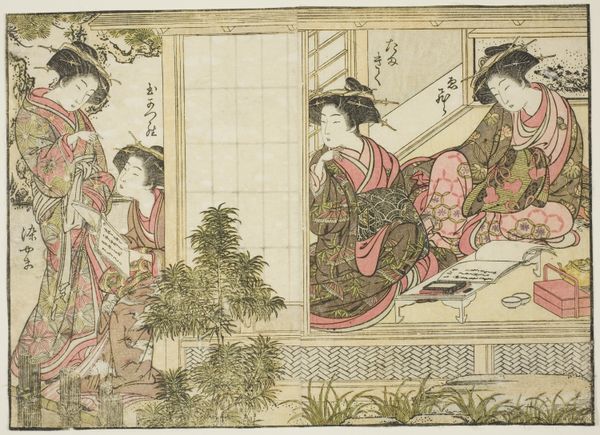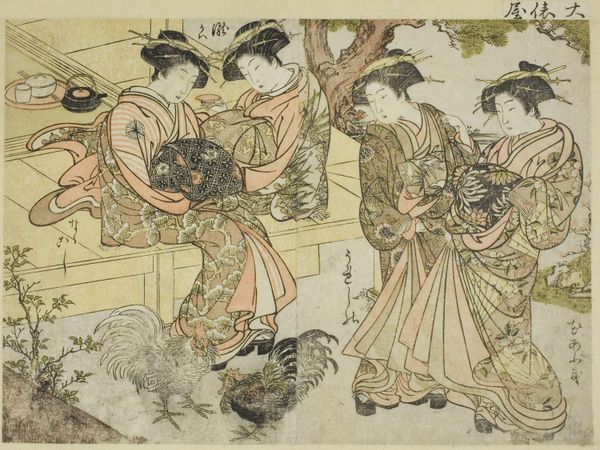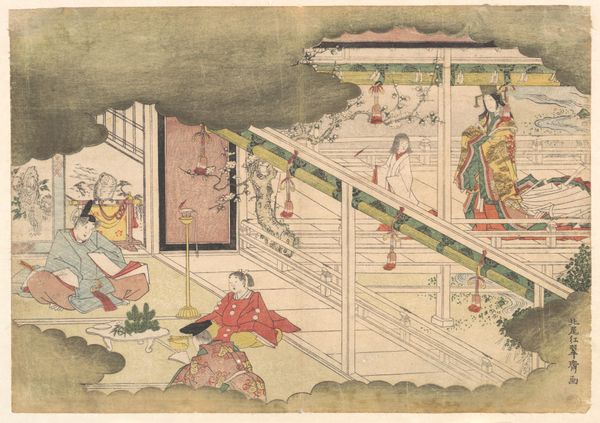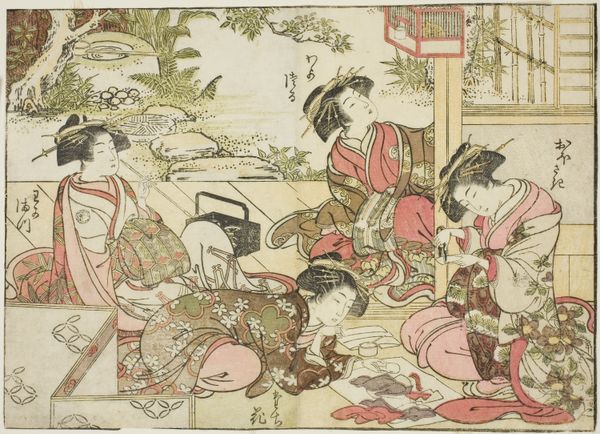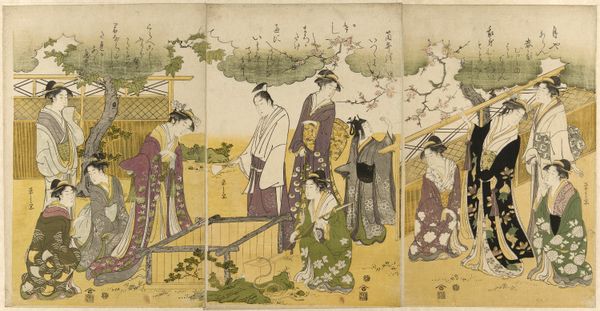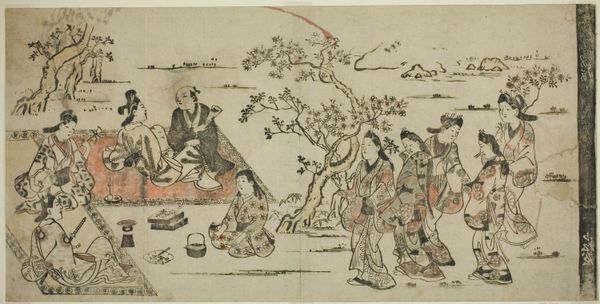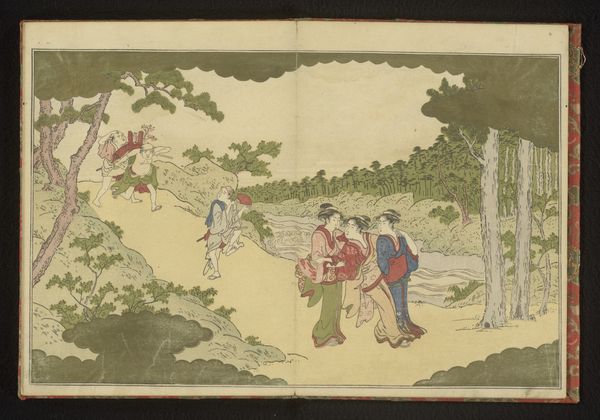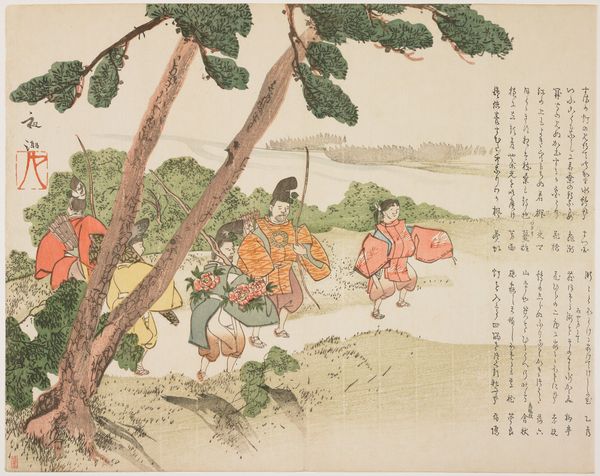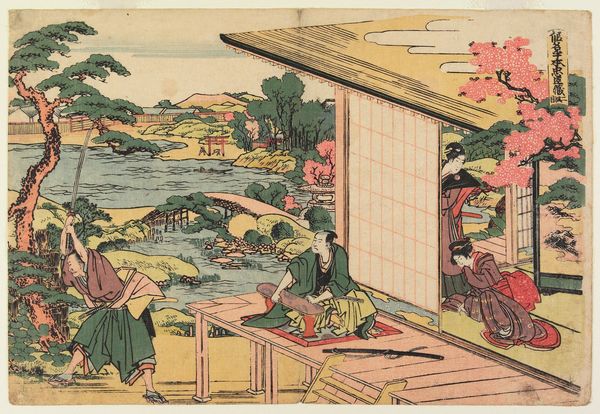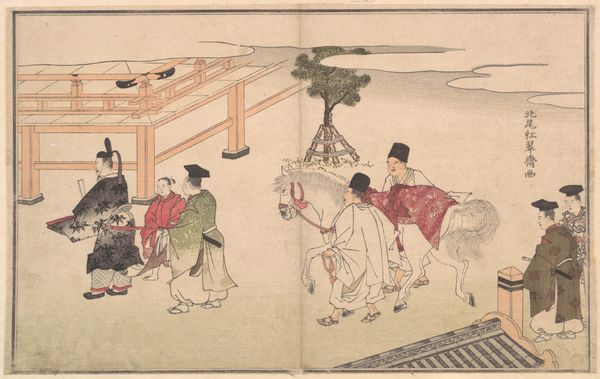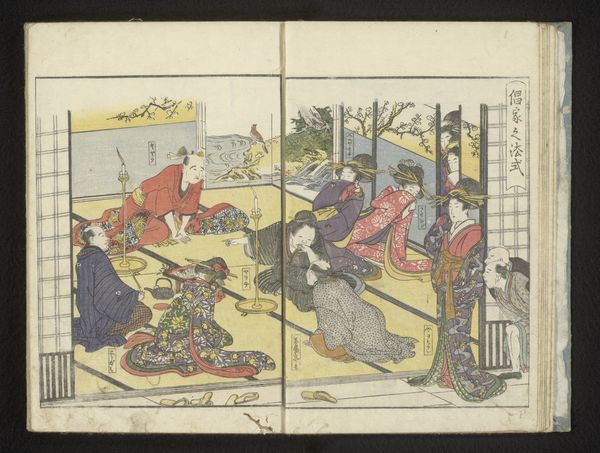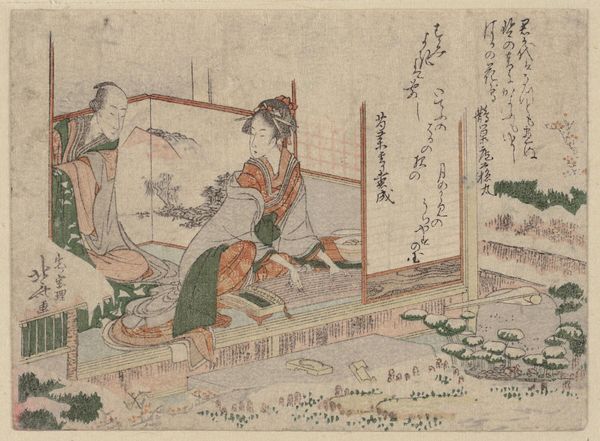
print, ink, woodblock-print
# print
#
asian-art
#
landscape
#
ukiyo-e
#
ink
#
woodblock-print
Dimensions: 15 1/4 × 29 15/16 in. (38.8 × 76 cm) (image, sheet, vertical ōban triptych)
Copyright: Public Domain
Curator: Welcome to "Sudden Shower at the Mimeguri Shrine," a beautiful c. 1787 color woodblock print by Torii Kiyonaga, held here at the Minneapolis Institute of Art. Editor: The delicacy of those raindrops...it feels both fleeting and timeless. You can almost hear the hushed whispers of the women hurrying along the path. Is it my imagination, or is there a touch of melancholy woven into those inks? Curator: Melancholy's interesting. Kiyonaga operated during a period of relative peace and prosperity, and these images were made and marketed to a growing middle class. While reflecting leisure, they’re carefully constructed. Notice how he used the triptych format not just for breadth, but to create a cinematic-like narrative flow from left to right? Editor: Ah, so we have a story unfolding! The women emerge from the shrine, encounter the downpour...then what? It looks as if someone might be thinking twice about heading out into it at all. But it feels more subtle than any clear message. There's this mix of serenity and quiet disquiet. You sense the unexpected can change the tone in an instant, the same way rain does in real life! Curator: Exactly, and that sense of real life is amplified by how Kiyonaga, influenced by developments in Western art and printmaking, depicted these fashionable women in more realistic, proportional dimensions compared to earlier Ukiyo-e prints. We're witnessing a changing Japan. Also, notice the carefully considered color palette: a subdued harmony of pale blues, grays, greens, and oranges creates a rainy, soft ambiance, very effective. Editor: The umbrellas themselves almost feel like characters, don't they? Popping into being to add those beautiful splashes of color! They look both fragile and resilient at the same time, sort of like the women themselves. This has a touch of humanity, of how we try and keep ourselves guarded in so many aspects of life! The artist gives us insight, despite the era. Curator: I agree completely! By capturing a mundane moment in time so exquisitely, Kiyonaga, within the broader Ukiyo-e tradition, immortalizes the essence of Edo-period life in a powerful way, while also revealing those insights across cultural divides and decades. Editor: Beautifully put. It goes to show how the everyday can hold its own epic stories and quiet revolutions when artists like Kiyonaga pause, pay attention, and share.
Comments
minneapolisinstituteofart almost 2 years ago
⋮
People rush to seek shelter from a sudden shower beneath a gateway at the Inari Shrine in Mimeguri, an area in Edo (present-day Tokyo). One of Torii Kiyonaga’s most famous compositions, this triptych reveals his wit through the inclusion of a vaporous apparition in the clouds above: a group of horned gods dressed as fashionable townsmen lounging and smoking. Traditionally, the Japanese have represented the Thunder God as a muscular demon in a leopard-skin loincloth, who creates thunder by pounding cosmic drums. Here, however, Kiyonaga parodies popular poetry gatherings among Edo sophisticates by showing two demons contemplating a verse written on a long poem slip (tanzaku). The scene is undoubtedly a reference to a poem written by Takarai Kikaku (1661–1707) and dedicated to Mimeguri Inari Shrine to pray for rain.
Join the conversation
Join millions of artists and users on Artera today and experience the ultimate creative platform.
